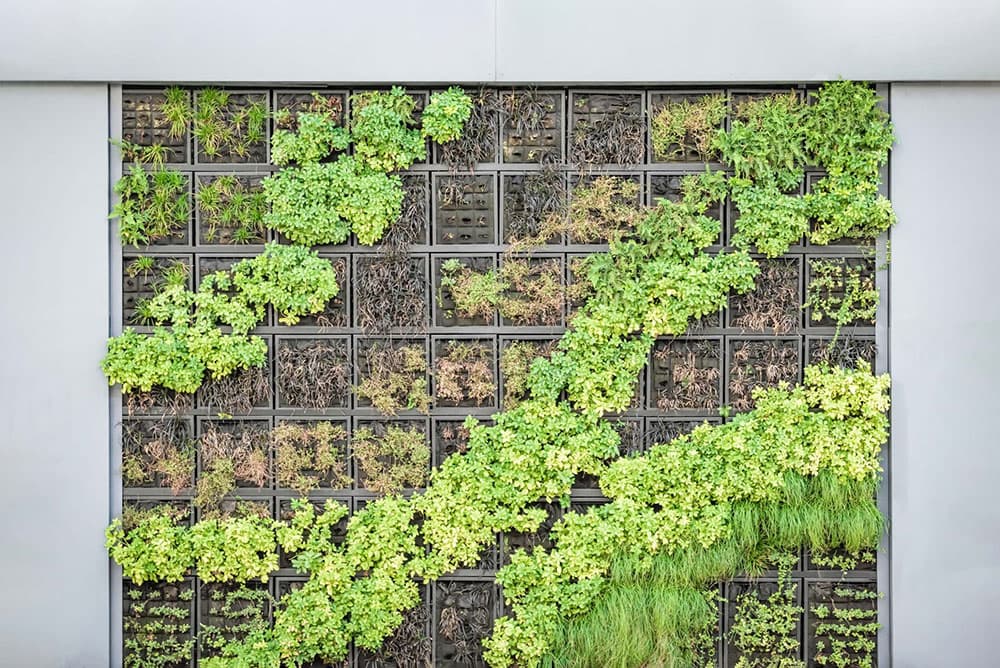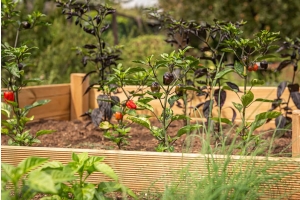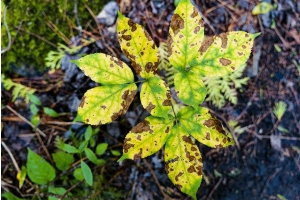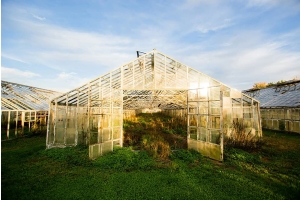How to Grow in Small Spaces: Vertical Gardening and Container Setups

When planning a garden, the amount of space available can often be a significant obstacle that gardeners encounter, especially when trying to build a garden at home.
Not everyone is lucky enough to have a large garden or allotment space, so many gardeners are limited in the amount and variety of plants they can grow.
One solution for a gardener with limited space is vertical gardening. Vertical gardening, also known as vertical farming or vertical cultivation, is a clever way of maximising the amount of space available to grow plants while minimising the overall footprint of your garden.
In this article, we will explore some simple tips to help you set up a vertical garden, including choosing a location, explaining which materials you need to get started and suggesting some plants that lend themselves well to vertical growing.
Getting Started with Vertical Cultivation
Location
When it comes to location, plants in a vertical garden have the exact requirements as those in a standard domestic or industrial garden: sunlight, hydration, aeration, and nutrition.
Most vertical gardens are established on a wall or trellis. If you are considering developing a wall-based vertical garden, it is essential to consider your location carefully, as you may not have the opportunity to change your mind later.
Choosing a South-facing location will maximise the sunlight your vertical garden receives, but for some plants, this can cause just as much harm as good. Instead, consider choosing a South-West facing wall for your vertical garden, as this will provide plenty of light without overwhelming your most delicate plants.
One alternative to a wall-based vertical garden is to plant using a free-standing trellis in a plant pot. Trellises are an excellent choice for a vertical garden as they can be rotated and relocated easily, giving you greater control over plant development and allowing you to adjust for unexpected weather conditions or temperature changes.
However, trellises in a plant pot may create a larger footprint than plants grown directly on a wall or hanging basket, so they might not be the best solution for a gardener with limited room.
Depending on your budget, you may also want to consider a Danish Trolley. Danish trolleys are tall, mobile units suitable for holding and displaying a large volume of potted plants. Danish Trolleys often provide the best of both worlds, as they provide the height of a wall-based vertical garden with the mobility of a plant pot trellis.
>Materials
The materials you need to get started will depend on the type of vertical garden you are attempting to establish. However, some tools will be used across a wide range of vertical gardens, including:
- Containers
- Battens
- Trellis or Mesh
- A Staple Gun or Nails
For a typical wall-based vertical garden, you will require a wall that is strong enough to support the weight of your plants and growing media and secure enough to attach battens, a trellis, or mesh, depending on your preference.
Before starting a vertical wall garden, it's important to ensure the wall is clean and strong enough to support plant growth. This means choosing a wall that will support the weight of your plants and growing media without issue.
When you are happy with your choice of wall, start by attaching horizontal battens across the width of your growing area. Battens separate your trellis or mesh from the wall, encouraging plenty of airflow and giving your plants an excellent chance to thrive.
Attach your mesh or trellis to your wall-mounted battens with staples, ensuring the connections are strong enough to support your chosen containers when they are full of growing media. It’s important to remember here that mesh will be lighter than a trellis, which may make it a better choice for climbers. Still, a trellis will provide superior rigidity, which could be the superior choice for fruiting or flowering plants.
f you are using a free-standing or plant pot trellis, you will need to select the pot you would like to use (likely a heavy-duty pot as the trellis is likely to be quite tall) and choose an appropriate trellis or mesh for your plants to climb and cling to.
But it's important to remember that a wall-based vertical garden isn’t the only way to grow.
Any vertical space that can support the weight of a plant pot could work as a vertical garden, whether this is a metal frame or an old piece of guttering attached to a fence. As long as there is plenty of light, aeration and nutrition, you can let your imagination run wild as you watch your vertical garden come to life before your eyes.
Containers
For a vertical garden, almost any container can serve as a functional plant pot.
Lightweight plant pots are popular, but so are old aluminium cans, or even re-purposed plastic milk bottles. Choosing your containers is an excellent opportunity to let your personality shine through, so don't be afraid to customise your pots with paints, stickers or labels to help your garden reflect your aesthetic.
However, drainage holes are essential for any container you use to prevent mould, mildew, and root rot. Drainage holes can be made quickly and easily with a drill, allowing you to transform an old soup can into the quirky pride and joy of your vertical garden.
Plants
When building a vertical garden, there are a few considerations to bear in mind that go beyond typical garden planting.
Plants that are planted directly into topsoil are lucky enough to have a ready-made system for drainage, nutrition and, to a degree, heat regulation. Plants in a vertical garden, however, are at greater risk of inadequate nutrition and drying out, as the growing medium will not retain water or topsoil.
If possible, consider setting up an irrigation system. If your vertical garden is too far from your water supply, water regularly to prevent the soil and compost from drying out.
If you are looking for a beautiful display of floral elegance for your garden, roses are a classic choice for climbing plants and look amazing when blooming over an exposed brick wall. If you are considering an alternative, clematis is also a fantastic choice that can bring a delicate elegance to any garden.
If you would like to bring an evergreen climber into your garden, jasmine will release a lovely summer scent that will spread across your garden. Ivy is also a classic choice for a climbing evergreen and will look incredible all year round.
But if you are passionate about building a vegetable garden, vertical gardens are a great opportunity to experiment and see what you can achieve. Easy starter vegetables like lettuce, rocket, tomato and chilli peppers are a great place to start, but feel free to mix it up and experiment with trying to grow your favourites.
Different Types of Vertical Gardens
Although we've focused on growing a vertical garden on a wall or trellis, there are plenty of other ways to add more space to your garden by taking advantage of vertical spaces.
Hanging baskets are a classic example of a planting style that makes excellent use of space, or feel free to get creative by fastening old gutters or planters to fences to create an elevated space for your vertical garden to thrive.
Vertical gardens allow you to try new things and see what works for you, so take plenty of time to plan and don't be afraid to make changes along the way.
Explore Vertical Farming with LBS Horticulture
Vertical gardens are a fantastic opportunity to learn about gardening and develop your own garden, even if you are working within a limited space.
Browse our range of gardening tools, irrigation systems and growing media to help grow your passion and develop the vertical garden of your dreams.





